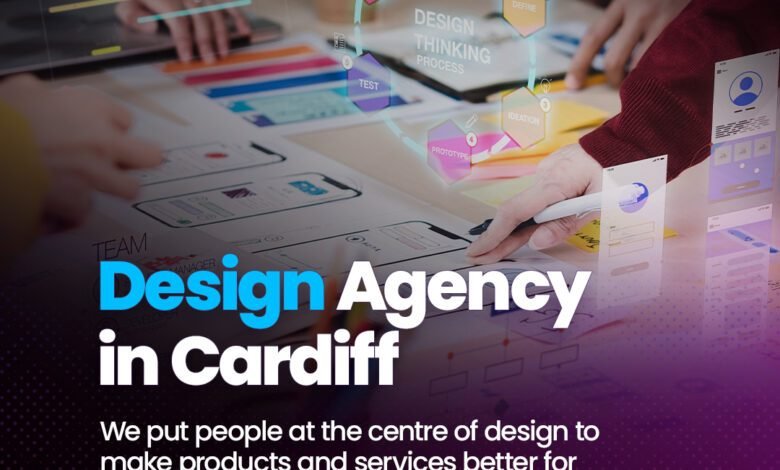15 Accessible Website Design Tips & Solutions

In the current digital environment, website accessibility has become critical. As experts in Cardiff web design and development, it is not only our mission but also our duty to make sure that all users can easily navigate and use our websites. We’ll go over 15 crucial pointers and solutions for creating accessible websites in this guest post, which will enable companies to reach a wider audience and offer a first-rate user experience.
Understanding Website Accessibility
Before diving into the tips, let’s grasp the concept of website accessibility. It’s about ensuring that our designs and content can be utilised and consumed by everyone, regardless of any impairments they may have. From impaired vision to motor difficulties and cognitive impairments, accessibility encompasses catering to diverse user needs.
How important is accessibility on websites?
Website accessibility is more critical now than ever. According to the World Health Organisation (WHO), about 1.3 billion people worldwide, or 1 in 6 individuals, face significant disabilities. This means inaccessible websites lead to user struggles or complete abandonment. Three key reasons emphasise the importance of website accessibility:
- Social: Inaccessible websites further marginalise people with disabilities, hindering digital inclusion and customer care.
- Economic: Ensuring website accessibility expands your audience and fosters brand loyalty, as 70% of disabled individuals won’t return after poor online experiences.
- Legal: The Equality Act (EQA) mandates accessibility, aligning with Web Content Accessibility Guidelines (WCAG) to prevent discrimination. Yet, 96.8% of top websites fail to meet these standards, risking legal action as seen in the Beyoncé case of 2019.
Website Accessibility Testing
Combining manual checks with automated tools is crucial for ensuring comprehensive website accessibility. By embracing both approaches, we can identify and address accessibility issues effectively, ensuring that our websites are truly inclusive.
Understanding Accessibility Compliance Levels
The Web Content Accessibility Guidelines (WCAG) outline different compliance levels: A, AA, and AAA. Achieving compliance with these standards is vital for meeting accessibility requirements and providing a seamless user experience.
Top Tips for Website Accessibility
Ensuring website accessibility is a multifaceted endeavor encompassing various design and development considerations. Here, we delve into fifteen key strategies for optimising accessibility, catering to users of all abilities.
1. Select an Intelligible Content Management System (CMS):
The choice of CMS profoundly impacts website accessibility, especially in the context of web development cardiff. Opting for platforms like Craft CMS, which prioritise accessibility features, facilitates content creation and management while ensuring inclusivity for Cardiff-based web development projects.

2. Structure Pages Logically Using Headings:
Proper hierarchical structuring of content using headings not only enhances readability but also aids navigation for users, especially those relying on screen readers. This practice aligns with accessibility standards and improves search engine optimisation.
Bonus fast tips for creating an accessible page structure are as follows:
- Stay away from using a <h1> for anything other than the title of the website or page.
- Avoid skipping heading levels (<h1> to <h3>), screen reader users will perceive this as a lack of content.
3. Include Descriptive Alt Text for Images:
Alt text provides textual descriptions of images, enabling users with visual impairments to comprehend the content. This simple yet crucial step enhances accessibility and ensures a more inclusive browsing experience.
When you consider infographics that include critical messages for your customer, this becomes even more crucial.
Helpful tips:
- Any text that appears in your image should be included in the alt text as well.
- If an image is utilised as a link, the screen reader will display the file name. Therefore, even if you do not intend to optimise your alt text, be sure to give careful thought to the names of your picture files and strive for maximum descriptiveness.
4. Ensure Hyperlinks Have Unique and Descriptive Names:
Descriptive link text enhances navigation, particularly for users employing assistive technologies like screen readers. Meaningful link descriptions improve user understanding and facilitate seamless interaction with the website.
5. Consider Color Contrast and Accessibility:
High color contrast and thoughtful color choices enhance readability and usability, especially for users with visual impairments. Adhering to accessibility guidelines ensures that content remains accessible to all individuals, regardless of their visual abilities.
6. Design Forms with Accessibility in Mind:
Well-designed forms with descriptive labels and logical field grouping enhance usability and accessibility for all users. Incorporating accessibility features like proper tab order and error handling ensures a more inclusive form-filling experience.
7. Proper Use of Tables for Tabular Data:
Semantic HTML elements and attributes should be employed to ensure that tables convey meaningful information to all users, including those using assistive technologies. Properly structured tables enhance accessibility and facilitate data comprehension.
8. Make Content Accessible by Keyboard Alone:
Keyboard accessibility is essential for users who cannot use a mouse or touchscreen. Ensuring that all website functions and features are accessible via keyboard inputs enhances usability and inclusivity.
9. Understand the Appropriate Use of ARIA Roles:
While ARIA roles can enhance accessibility, they should be used judiciously, with a preference for native HTML elements. Proper utilisation of ARIA attributes improves the user experience for individuals relying on assistive technologies.
10. Addressing Dynamic Content Accessibility:
Dynamic content updates should be implemented in a manner that ensures accessibility for all users, including those using assistive technologies.
- Keyboard traps: Ensure dynamic content updates do not create keyboard traps, allowing users to navigate with ease.
- Video and audio content: Provide transcripts or captions for multimedia content, aiding users with hearing impairments.
- Widgets: Make sure interactive widgets are keyboard-accessible, facilitating navigation for all users.
- Flashing content: Avoid flashing or rapidly changing content that may trigger seizures or cause discomfort for certain users.
11. Identifying the Language of Text:
Properly identifying the language of content aids screen readers in pronouncing text accurately, improving comprehension for users with visual impairments. Language identification is a simple yet essential accessibility practice.
12. Avoiding Tiny Fonts and Ensuring Readability:
Maintaining adequate font sizes and readability is crucial for accommodating users with varying visual abilities. Accessibility standards recommend minimum font sizes and readability guidelines to ensure inclusivity.
13. Utilising Whitespace Effectively:
Strategic use of whitespace enhances content comprehension and improves the overall user experience. Adequate spacing between elements reduces cognitive load and ensures clarity for all users.
14. Providing Transcripts for Audio and Video Content:
Transcripts offer an alternative format for consuming multimedia content, benefiting users with hearing impairments and those with low bandwidth. Including transcripts ensures accessibility and enhances the reach of multimedia content.
15. Testing, Testing, Testing!:
Regular testing and evaluation are essential for maintaining accessibility compliance and optimising the user experience. Thorough testing, including manual checks and automated tools, ensures that websites remain accessible to all users.
Incorporating these fifteen strategies into website design and development processes fosters inclusivity and ensures a more accessible online experience for users of all abilities. By prioritising accessibility, businesses can demonstrate their commitment to inclusivity and provide a seamless browsing experience for all users.

Tools for Accessibility Testing
Web design agency cardiff can leverage various tools to assess website accessibility. Tools like:
- Contrast Checker: Assess color contrast to ensure readability for users with visual impairments.
- Web Accessibility Evaluation Tool: Conduct comprehensive evaluations to identify accessibility issues across the website.
- Lighthouse: Utilise Lighthouse to evaluate overall accessibility and receive recommendations for improvement.
Conclusion
In conclusion, website accessibility is vital for businesses in Cardiff and beyond. At Head45 Ltd, we specialise in crafting inclusive websites. Implementing these tips enhances online presence and user experience. Accessibility isn’t just about compliance—it’s about inclusivity. Let’s collaborate to make the web accessible for all.



